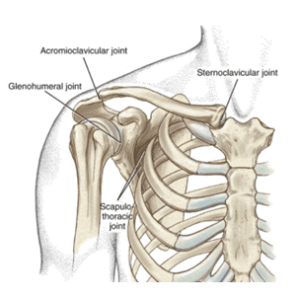Treatment
There’s no cure for osteoarthritis, but there are things you can do for yourself that can make a difference to how the condition affects you and could significantly reduce your pain.
Exercise
Joints need to be exercised regularly to keep them healthy. It’s very important to keep moving if you have osteoarthritis of the shoulder, as exercise can help maintain the range of movement and strengthen the muscles around your shoulder all of which can reduce the symptoms and pain of osteoarthritis.
Various type of exercises proven to help treat osteoarthritis of the shoulder include range of movement exercises, strengthening exercises & aerobic exercises- start slowly, build up the exercise gradually and a small increase in your pain when you start can be normal.
Pain relief
- Using a heat pack or something similar on a painful shoulder might help to relieve the pain and stiffness of osteoarthritis.
- An ice pack can also help but be careful not to put ice or heat packs or hot water bottles directly on your skin – wrap them with a tea towel or cover.
- Over the counter painkillers like paracetamol will ease the pain, but need to be taken regularly in order to control the pain. A short course of anti-inflammatories like ibuprofen can help with swelling, and therefore help you move more freely. Follow the instructions on the packet and discuss using them safely with a pharmacist or GP, especially if you have any underlying health conditions.
Activity modification
Activity is encouraged, although adaptation is important. At times, repetitive activities might need to be scaled back. Instead, introduce activities that allow your symptoms to recover but keep you active.
See Versus Arthritis for more detail and for links to self-management tips and exercises.
When should I seek help?
If your symptoms continue after trying the advice above, you should seek further advice from a healthcare practitioner.
Osteoarthritis can be painful, but most people are able to continue their general activities by following simple management advice. If your pain or limited movement is impacting significantly on your ability to carry out your usual activities, your quality of life or your wellbeing, please speak to a physiotherapist or other healthcare practitioner for further support, advice and to consider other options for management of your condition.
Steroid Injections
An injection directly into the shoulder joint may help reduce swelling and pain. For more information visit the NHS website.
If conservative treatment hasn’t worked for you and your pain is very severe then you may benefit from referral to an orthopaedic shoulder surgeon for further assessment and to discuss any surgical options.
